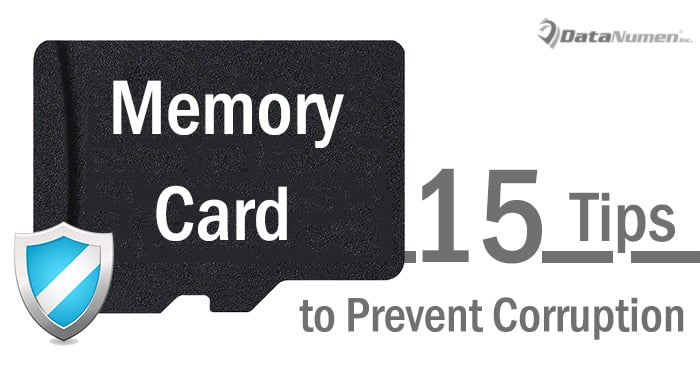Memory card is frequently used in various multimedia devices for storing data. If it gets corrupted, its data will tend to get compromised as well. So you have to follow the 15 tricks in this article to protect your memory card against damage.
Memory card is quite popular nowadays in that it is developed to be able to store increasing amount of data and it is much more tiny and portable than other types of data storage media. However, it is equally prone to corruption due to various factors, such as power shortage or improper removal, etc. Therefore, you’d better back up the memory card data regularly to other media. The backups will help a lot in later data recovery, like PST recovery on computer. Once the memory card is damaged, you will find data inaccessible. Thus, it is vitally important to make endeavor to safeguard your memory card against damage. Here are 15 effective tips for you.

1. Format the new card as soon as you get it
First of all, after you buy a memory card, you should format it as soon as possible. Although the card usually comes preformatted, it is necessary to format it again. In addition, you should format it on the device where you intend to use it, which can make sure it is entirely compatible with the device system.
2. Keep some space left on the card
Moreover, you have to always keep some extra space left on the memory card. It means that you should never run out the space of memory card. Otherwise, you’ll surely receive various errors and shorten the card’s lifespan.
3. Safely eject the card from device
Similar to other external data storage media, you should always safely eject the memory card. More specifically, you should not hard remove the card from device when it is still being accessed, such as transferring data or reading data, etc.
4. Format the card in the original device
If you want to format a card, you’d better do it on the original device. For example, if the card is used in a camera, you should only format in the camera which can structure it for the camera properly. Formatting it on a different device will tend to bring out errors and tend to fail.
5. Store the card in safe location
To prevent a memory card from being stolen or corrupted physically, you should store it in a safe location. Various external factors, like water, fire, theft and so on, can destroy such a card like a breeze.
6. Turn off the device before removing the card
When you want to remove the memory card, you should ensure that the device is turned off entirely. Otherwise, not only will it cause memory card corruption, but also it can lead to device damage.
7. Use high-quality card reader
To read the card data on computer, users will be used to utilizing a card reader. This card reader can make impact on the health of memory card too. Hence, it is suggested to always opt for a good quality card reader. It will be much better if to use the reader made by the same manufacturer as the card.
8. Never use the card if device battery is low
When the device battery is very low, you should also never use the memory card. It is because that the device may get powered off at the exact moment of you use the card, which can damage the card readily.
9. Don’t use one card on many devices
You are better not using a single memory card on many different devices. Distinct devices may work on varying file systems, which may be incompatible with what the memory card is formatted with. In this case, the card tends to die.
10. Select high-quality memory cards
Without any doubts, the quality of memory cards will play a great role too. If the card is made by unknown and unreliable manufacturer, it may be much more susceptible to damage. Thus you should only trust in memory cards of reputable brands.
11. Stop using the card when getting any errors
As soon as you encounter any errors when trying to access the card data, you had better stop all operations at once. Otherwise, further damage will be made to the card without letting you know.
12. Don’t delete card data from computer
For convenience, you may prefer to delete the card data from computer. However, it is actually unadvisable. Deleting from computer will only remove the pointers to the data without properly updating the metadata on the card. It can result in inconsistent metadata and cause damage on the existing data.
13. Use smaller size memory cards
Though many memory cards are developed with a great amount of storage space, it is recommended utilize several smaller-size cards instead of a single large-size one. Otherwise, once the single one is damaged, all of your data will be lost.
14. Don’t store any infected data on the card
In the contemporary era, viruses and malware can be powerful enough to destroy the system of device. So, you should block viruses from attacking your card. Thus, you should never store any infected data on your card.
15. Select “Format” if you want to make card fresh
When you want to delete all the card data, it is advisable to use “format” instead of “delete all”. “Delete all” option will only hide the data. If you want to get a fresh memory card, formatting card is the best option.
Author Introduction:
Shirley Zhang is a data recovery expert in DataNumen, Inc., which is the world leader in data recovery technologies, including SQL Server corruption and outlook repair software products. For more information visit www.datanumen.com